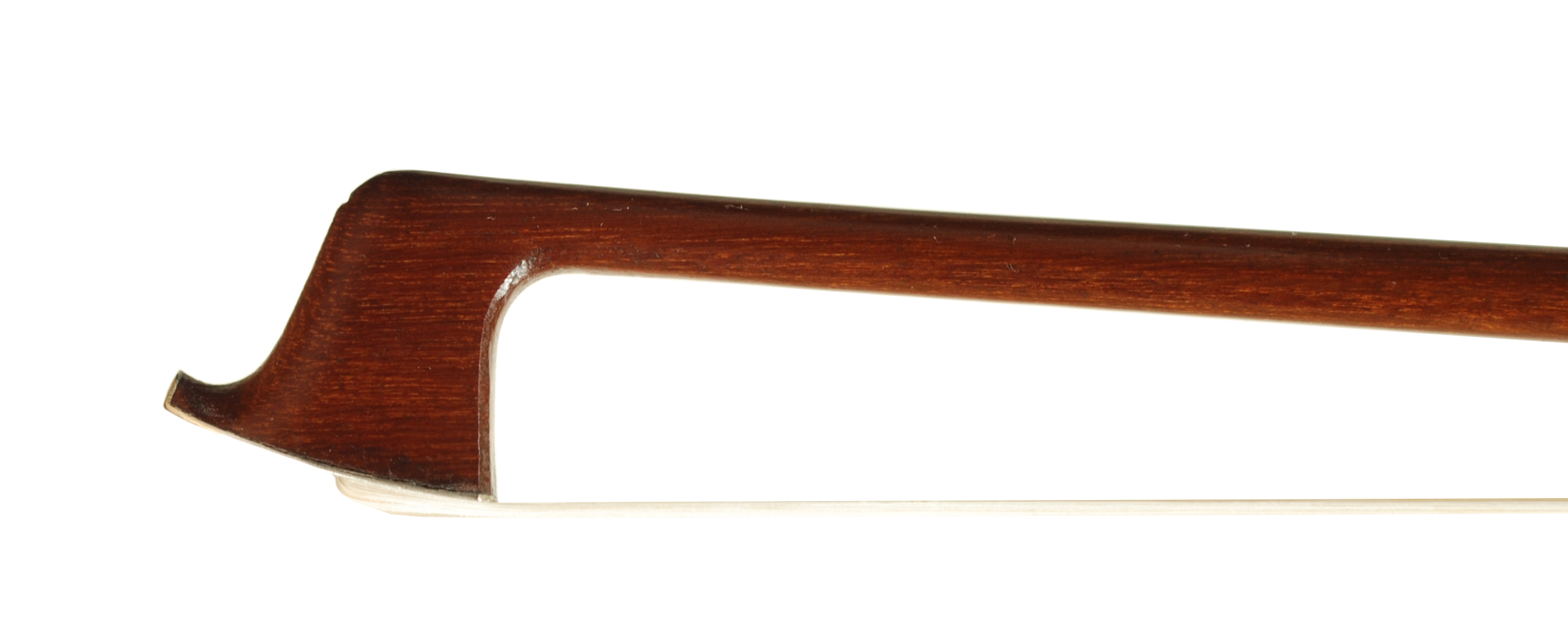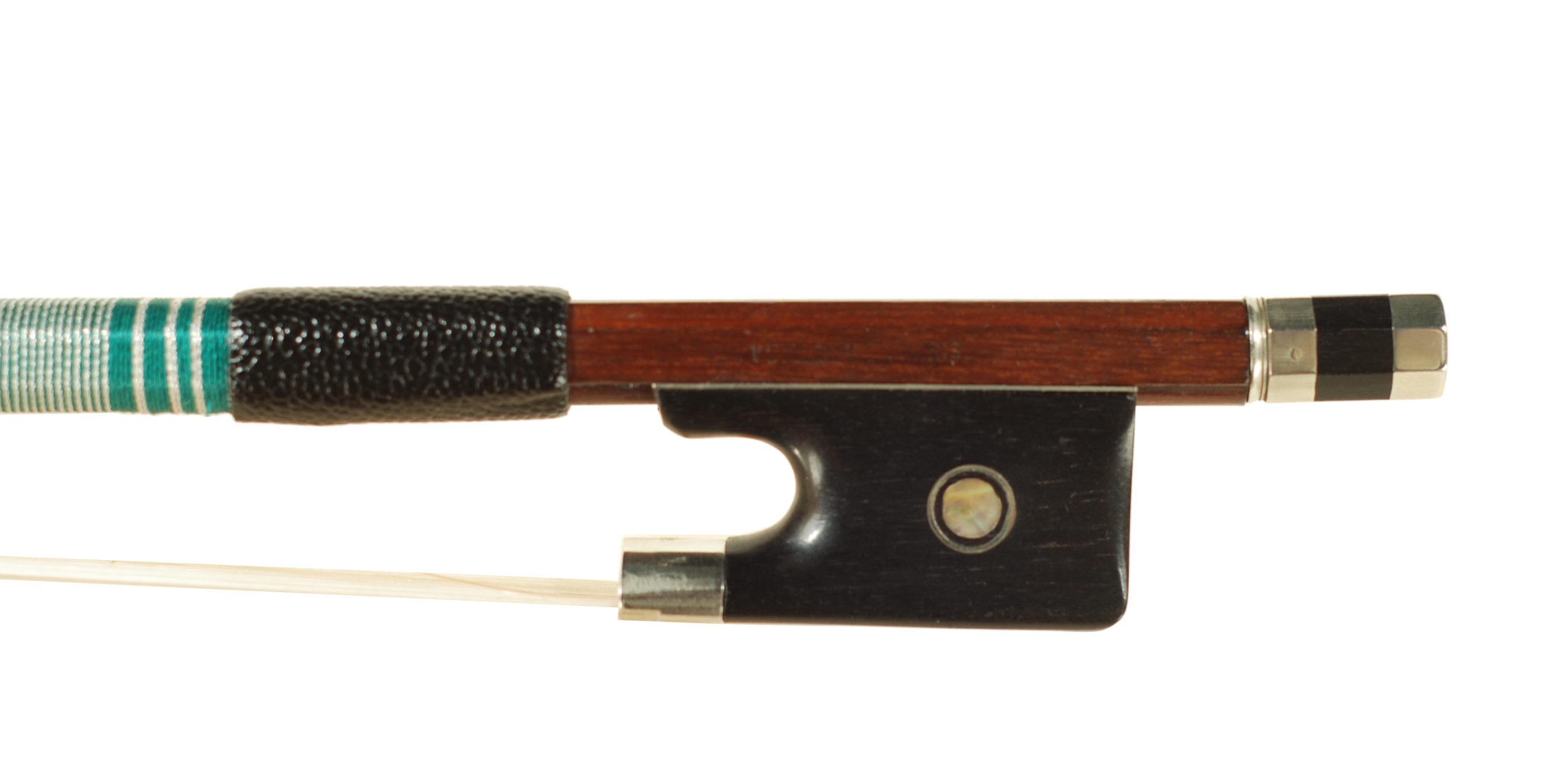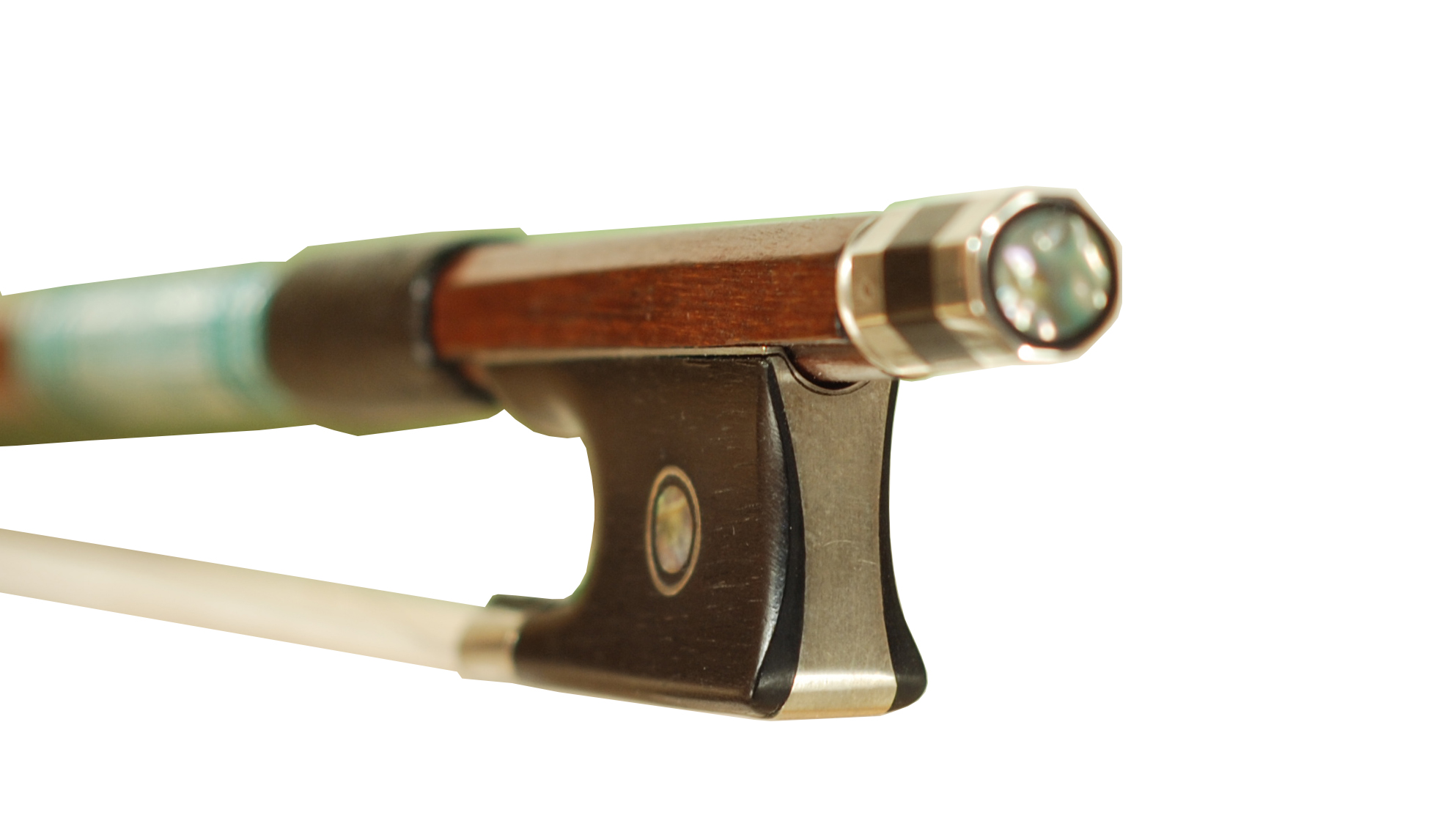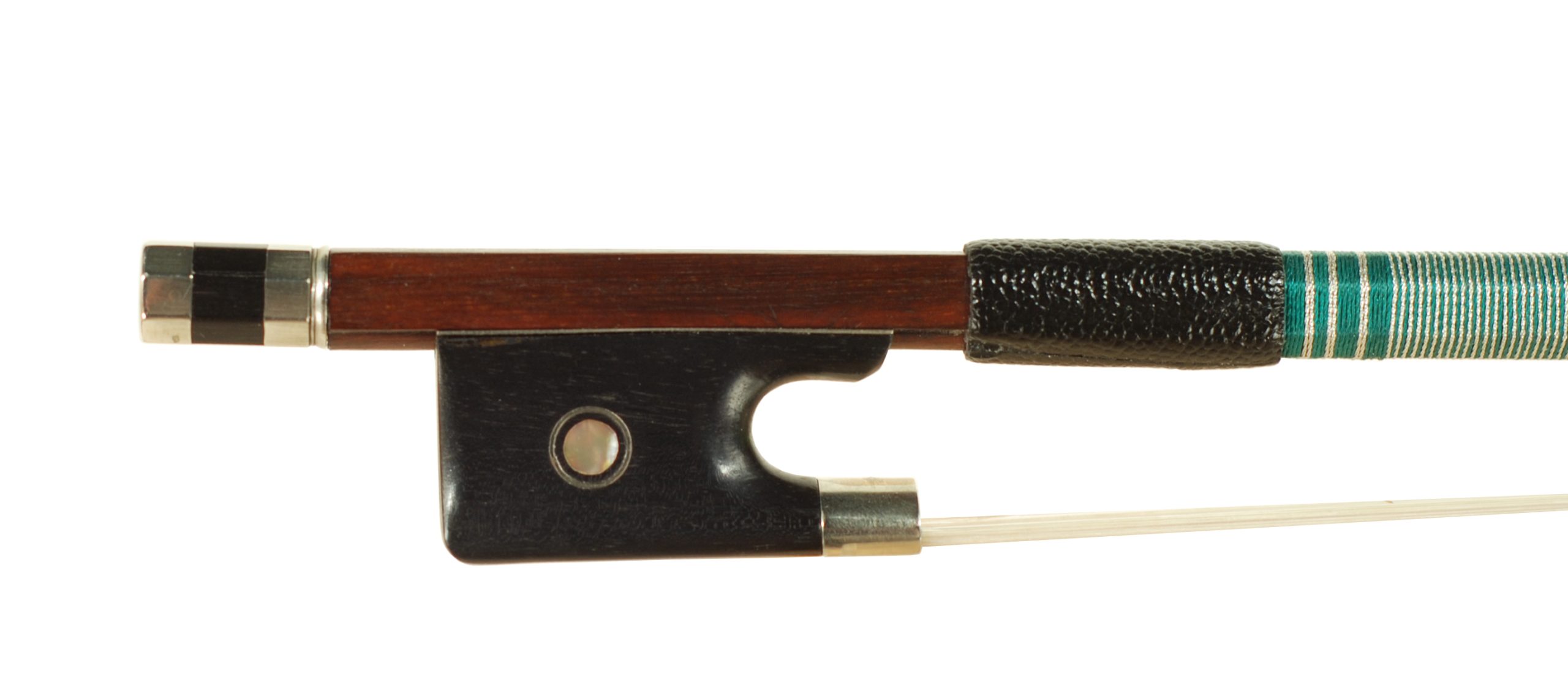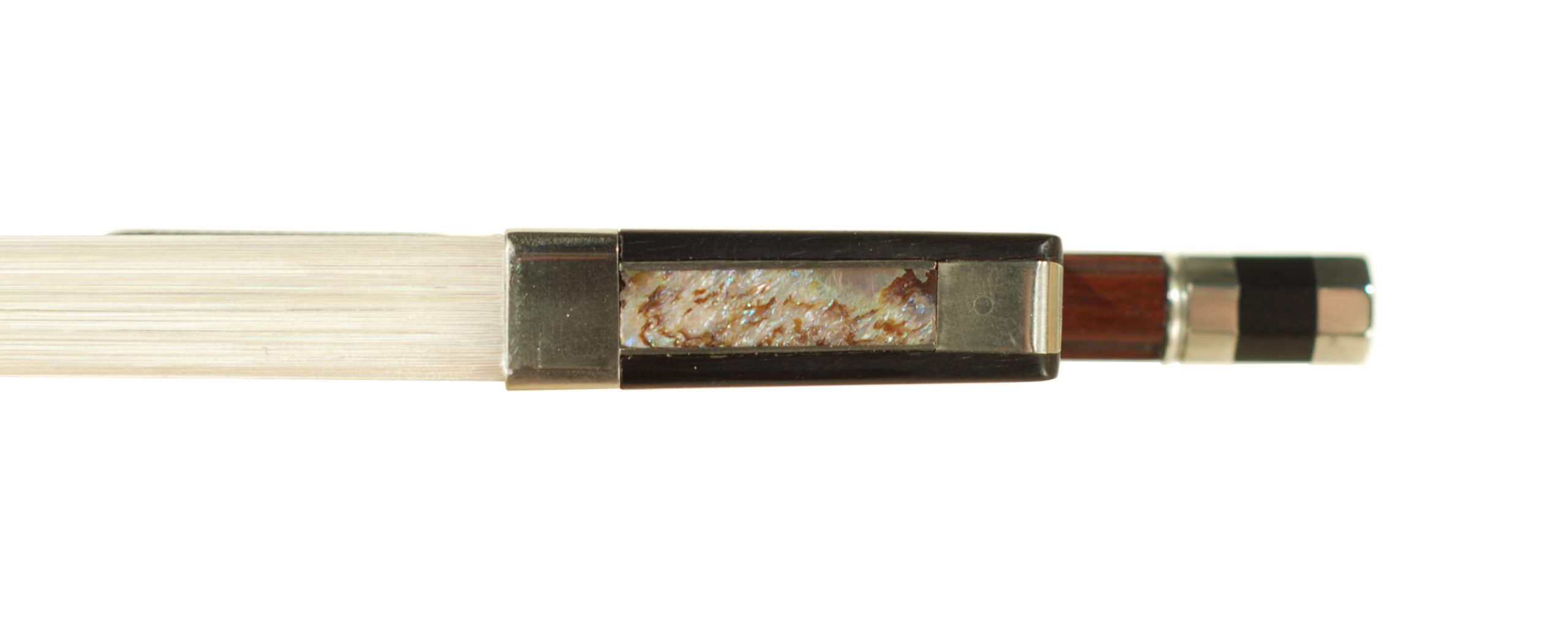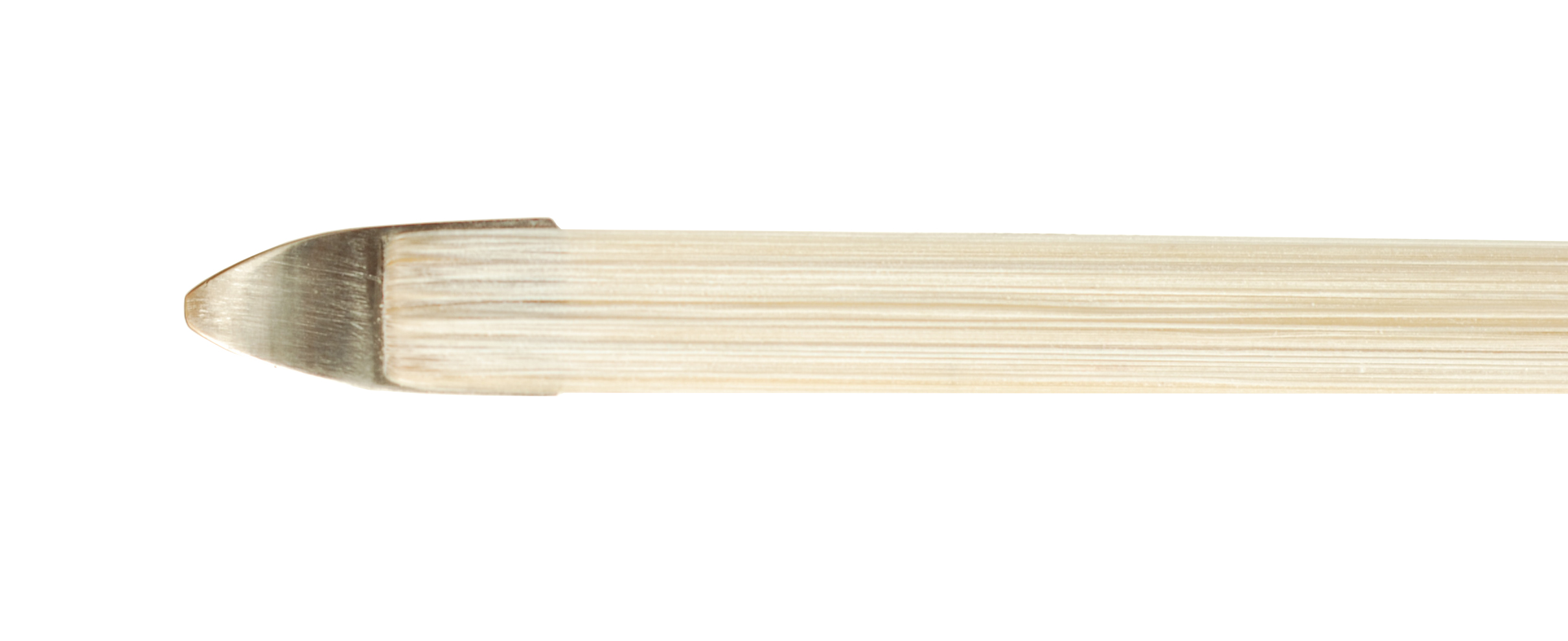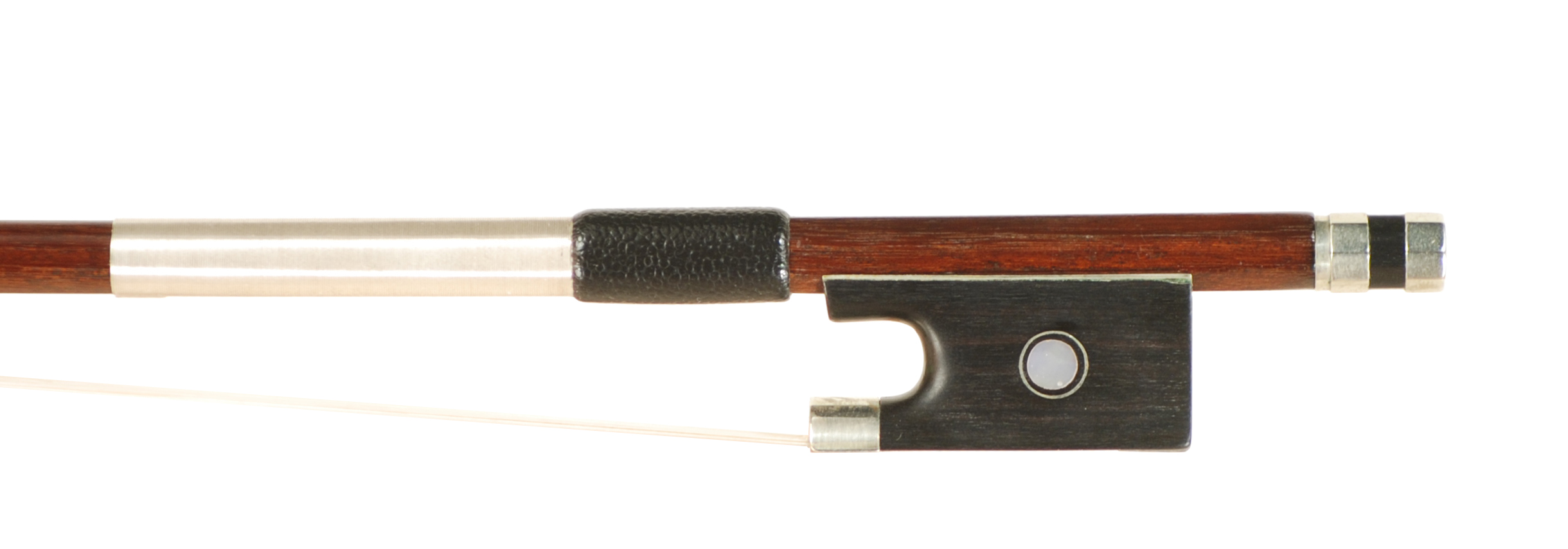Vuillaume a Paris Early 20th Century Mirecourt Violin Bow
$1,865.00
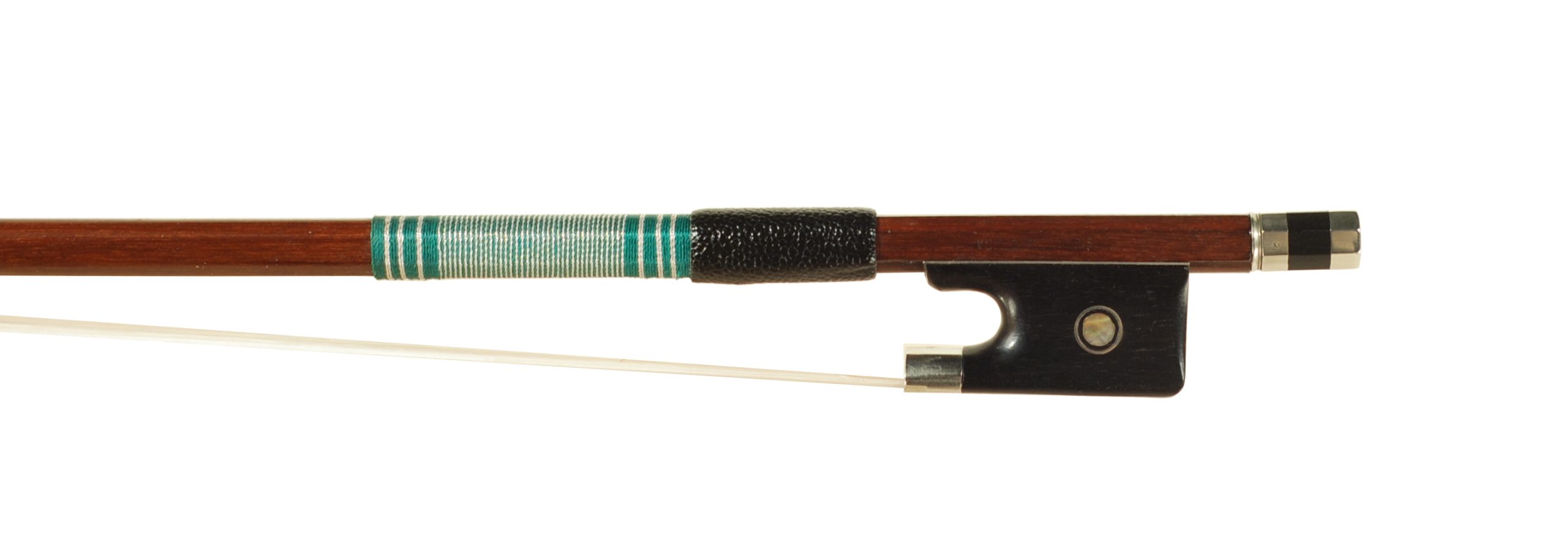
Stamped:
Made in Mirecourt, France circa 1900–1920 with a gorgeous piece of chocolate colored pernambuco crafted in round section. The bow has some flex and plays well with a good amount of fight. The frog is petite; gorgeous, an almost Peccatte style frog where the ferrule portion juts out beyond the top of the frog’s tongue. The frog sits in a track made specifically for the frog as the lining is rounded and fastened with silver pins, not screws. The track helps to keep the bow aligned with the stick and is an area of the bow where a fine craftsman wanted to show off his carving work on the bow. The frog is a Parisian eye model, and the pearl eyes jump in color along with the mother-of-pearl slide and the end pearl in the three-piece button. We replaced the winding with similar silk/tinsel because it was totally grody and could not be saved. We replaced the silk silver tinsel thread winding with some green. This pop of color helps set this bow apart. This is no plain Jane bow. Even the tip of the bow is silver. It has a vibrant strong upturn in the nose tip head. The bow has character, age, and a beautiful feel in the hand.
Paubrasilia Echinata, also known as pernambuco, grows exclusively in Northeastern Brazil, mostly along the coastal region. Bow making with this wood has not changed for over 270 years. It has now been deemed off limits by the Brazilian government and the CITES group. The wood for the last 3 years has been banned from use by bow makers. It is very weird because in my thought process trees can be replanted. Bow makers throughout the world only use 200-400 pernambuco trees per year. This cannot be the cause for deforestation in country like Brazil. At any rate pernambuco has been banned from being used in any new making. We have seen a huge surge in our pernambuco bow sales, especially our older restored bows. This ban on pernambuco has also led other countries to require musicians and orchestras to carry special passports for each bow made from pernambuco with them when they travel. This bow easily has close to 100 years on it when it was made. Imagine the wood being harvested in the mid to late 1800’s, dried for 15-20 years, and then sold and transported to become a bow in Mirecourt. Quite a journey from Brazil to France and now in our shop. I’ve had the stick in storage or hanging in my workshop for 45 years before getting to it. Now it is ready once again to be an ambassador for sound on a violin. Many string players claim that nothing beats the precise resistance, density, and elasticity of pernambuco for projecting the sound. Here at our shop, we have over 800 sticks made in pernambuco specie, completed, restored, and ready for purchase. If you are looking for some great sticks check out this bow and others in our collection.
Weight fully haired 62.1 grams
